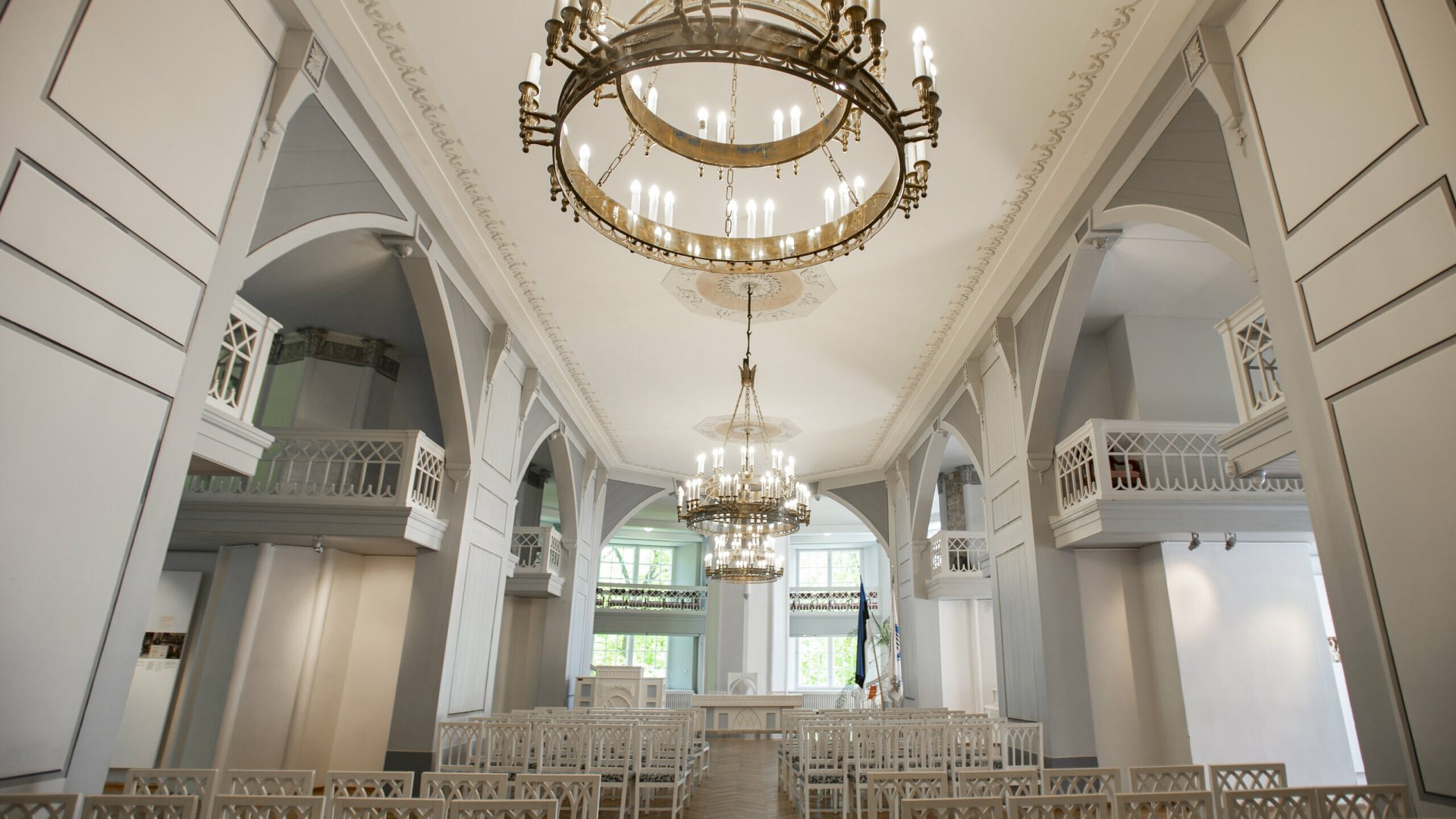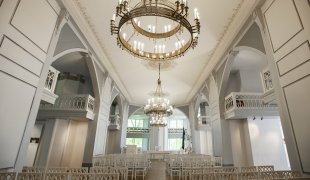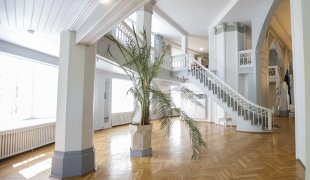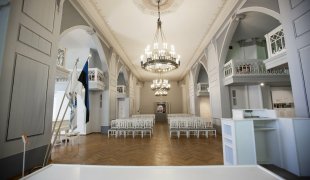White Hall

The White Hall on the third floor of the museum is one of the university’s grandest venues. Conferences, receptions, concerts and weddings are held in the White Hall. The University of Tartu and Tartu municipality hold important events here. There are two permanent exhibitions in the hall, presenting the history of the university and the most valuable part of its collections.
The White Hall is part of the choir room of the former cathedral. The powerful 14th-century cathedral was the clerical centre of the Diocese of Dorpat (Tartu) until the Reformation. The sacral building, which stood in ruins for centuries, was put to use again in the early 19th century as a temple of wisdom. The university library was built in the choir part of the ruins (completed in 1806). The room is decorated with five medieval octagonal pillars and there are niches in the outer walls, all still visible today.
Venue for events
These days, the hall is used for events and smaller exhibitions. Information about reserving the While Hall is available here.
In addition, the first floor of the White Hall presents a brief history of the University of Tartu, exciting facts about the current university, and a digital gallery of the rectors.
Exhibition “Never Look a Gift Horse in the Mouth”
A large part of the museum’s cultural collection is displayed on the balcony of the White Hall. On display are gifts given to the University of Tartu and souvenirs bearing the university’s insignia. Among these souvenirs are anniversary gifts, especially for the jubilee celebrated in 1982, as well as sports awards and gifts from foreign visits.
The exhibition is also a repository. So, instead of providing text for them, each item is given a number – just like in the collection storage rooms of a museum. Details about the items can be found in the exhibition’s information material, which is available in Estonian, English and Russian. The Crazy Scientist and the exhibition curators have also selected their favourite items. These are marked with the relevant labels in the cabinets.
Accessibility
Getting there
- The White Hall is on the third floor of the museum, accessible by elevator.
- There is a high threshold at the door of the hall, and staff can provide a wooden ramp to help cross it.
- The balcony of the White Hall can only be accessed by a narrow staircase.
Seating
- There are plenty of chairs with backs in the central part of the White Hall and on the balcony.
Light and sound
- The first floor of the White Hall is bright and spacious. The hall has plenty of natural light during the day.
- On the second floor of the White Hall, the light is partly shaded by blinds to avoid damaging sensitive objects.
- Display texts have dark text on a light background and are easy to read.
- The texts of the exhibition “Never Look a Gift Horse in the Mouth” are gathered in a booklet that visitors can read at their convenience.
- There is no background sound in the room.
Read about the accessibility of the entire building here.
Exhibition teams
Texts: Lea Leppik
Designer: Tiit Jürna
Language editor: Külliki Kuusk
Translator: Luisa Translation Bureau
Assistants: Sirley Kodasma, Leili Kriis, Janet Laidla, Virge Lell, Anu Lepp, Terje Lõbu, Kaire-Lea Pihlap, Juhani Püttsepp, Mariann Raisma, Kersti Roosimäe, Aile Tammiste, Andres Tennus, Sirje Üprus
Curators: Virge Lell, Terje Lõbu
Designer: Jane Liiv (Estonian National Museum)
Working group: Arvi Kuld, Maris Meus, Arle Puusepp, Annika Pindis, Tiina Vint






